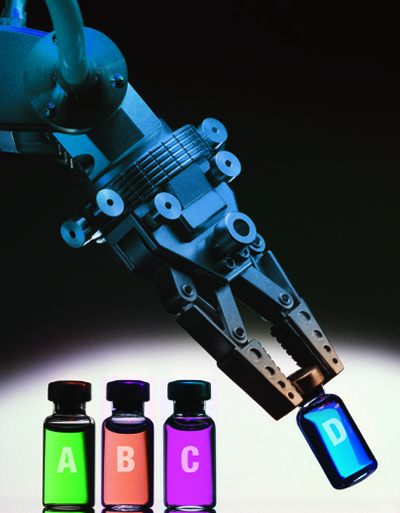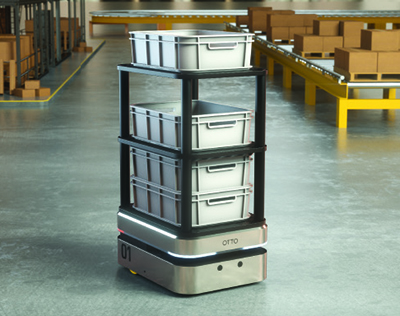Editors’ Picks




A new IDTechEx Research report explores mobile robotics in materials handling and logistics, which is predicted to become a $75 billion market by 2027 before doubling by 2038. These are among the findings of Mobile Robots & Drones in Material Handling & Logistics 2017-2037, which includes automated guided vehicles and carts (AGVs and AGCs); autonomous mobile vehicles and carts/units; mobile picking robots; last mile delivery ground robots (droids) and drones; and autonomous trucks and light delivery vans (level 4 and level 5 automation). Khasha Ghaffarzadeh, research director at IDTechEx and the report’s author, said the figures “mask turbulent transformative change…

TM Robotics

Among the many innovative technologies on display at ProMat this year were an assortment of robotic piece-picking solutions. Until very recently, these technologies were considered unrealistic for addressing the broad range of items handled in the average warehouse. For example, the winner of the inaugural Amazon Picking Challenge in 2015 was able to pick 10 of 12 correct items in less than 20 minutes. It would be a long time, it seemed, before such robots could compete with the dexterity and speed of even the slowest human picker. Now, many big players have unveiled robotic piece-picking technologies, often in partnership…
The Association for Advancing Automation (A3) has announced a series of fall conferences that align with some of the jobs of the future while providing insight into the latest automation innovations, in-depth technical training, practical strategies, and networking opportunities. Together, the three events address disciplines central to automation—robot safety, motion control, motor technologies, vision systems, and collaborative robots. “Automation technologies are fueling entirely new categories of jobs—really creating the jobs of the future—in addition to enabling companies to become more productive and create higher-quality products in safer environments,” said Jeff Burnstein, A3 president. “From instruction on implementing robot safety measures…
KNAPP has announced that it has has purchased a new building adjacent to its current location in Kennesaw, Ga., and a planned expansion will provide capacity for growth of the KNAPP North American workforce by 150 in the initial phases. The 50,000-square-foot multi-purpose facility will be renovated with completion scheduled in the fall of 2018, and will be home for company technology demonstrations, showroom and training facilities. The company is expecting to more than double its current North American workforce to approximately 300. “The company has been experiencing significant growth in its North American market and is forecasting the need…

It's an interesting time for those making decisions about warehouse technology. Automated systems have emerged that can dramatically improve productivity, efficiency and space utilization. But, you’re likely also seeing a lot of news about how Industry 4.0 and the Internet of Things will enable smarter, more adaptive warehouses in the future. Will today’s investments be made obsolete by future developments? The reality is there’s always something new coming and it’s necessary for each organization to weigh the risks of waiting against the risk of adopting technology too early. In the case of warehouse automation, the technology has matured significantly in…

The familiar technology stack of warehouse management systems (WMS) to manage transactions and inventory at the distribution center level and then hand order requirements down to the automation layer is not as simple as it used to be. With the complexities of e-commerce fulfillment, the need to orchestrate and optimize operations is driving the need for advanced execution software in the middle of the stack and for more optimization tools. In short, the DC tech stack has changed. It’s no longer just WMS on top, warehouse control system (WCS) software in the middle, and automated materials handling systems at the…

Carbon

The retail and consumer goods industries will change more in the next 10 years than they have over the past 40. One primary force is responsible - digitalization - and it has already begun. As you read this, a digital wave is underway that could bring a cumulative US$2.95 trillion in operating profits by 2025 for the retail industry. Accenture Strategy sees four main drivers of success - actions leading companies can take - through 2025 that are critical for consumer companies. All are powered by digital, the key tool industry leaders will use to transform themselves for the next…

It’s time to begin automating your warehouse to keep pace with business. Either through growth in e-commerce or a restructuring of the distribution center network, many warehouses that used to do fine with mostly manual methods need automation to adapt to new requirements. That decision process for automation used to center on an analysis of historical demand patterns. But what happens when e-commerce sends assumptions around order mix and volume out the window? The answer, say providers of warehouse automation, is that the reasons why you automate begin to change. It’s less about raw efficiency in processing large batches of…
AIA has announced that aku.automation GmbH (Aalen, BW, Germany), i-mation GmbH (Rottwell, Germany) and Prolucid Technologies (Ontario, Canada) have completed the necessary requirements to become AIA Certified System Integrators. AIA, the global trade association for the vision and imaging industry, grants this certification to integrators that meet certain industry criteria. These three companies join 10 current Certified System Integrator companies. Their certification will be effective for three years at which time they can re-certify. “These three companies have demonstrated their experience in vision system integration and can now use their certification as a third-party verification of critical qualifications to their…

A new report from Frost & Sullivan explores how the Internet of Things (IoT) and data analytics are transforming the manufacturing space, making data the new currency. The Dawn of Artificial Intelligence—Foreseeing Manufacturing in the Cognitive Era, part of Frost & Sullivan’s Industrial Automation & Process Control Growth Partnership subscription, finds that the development of smart and safe robots using machine learning techniques will continue to remain a prime area of focus. Currently, human intervention is needed for logical and reasonable decision making; however, with the rise of cognitive technologies, machines will be empowered to detect constantly changing manufacturing scenarios…



